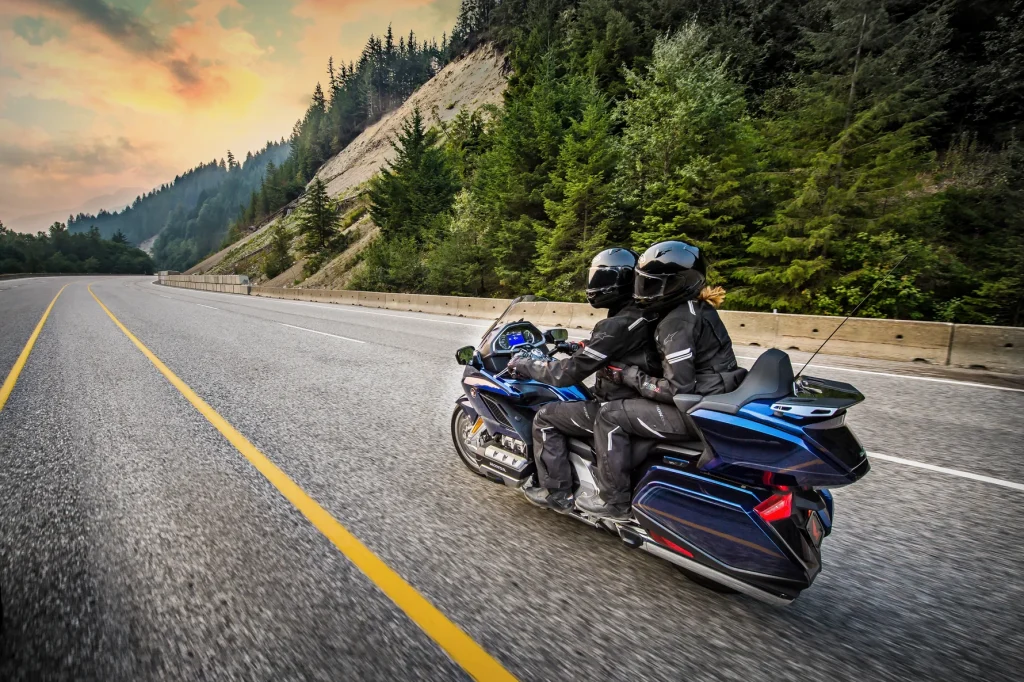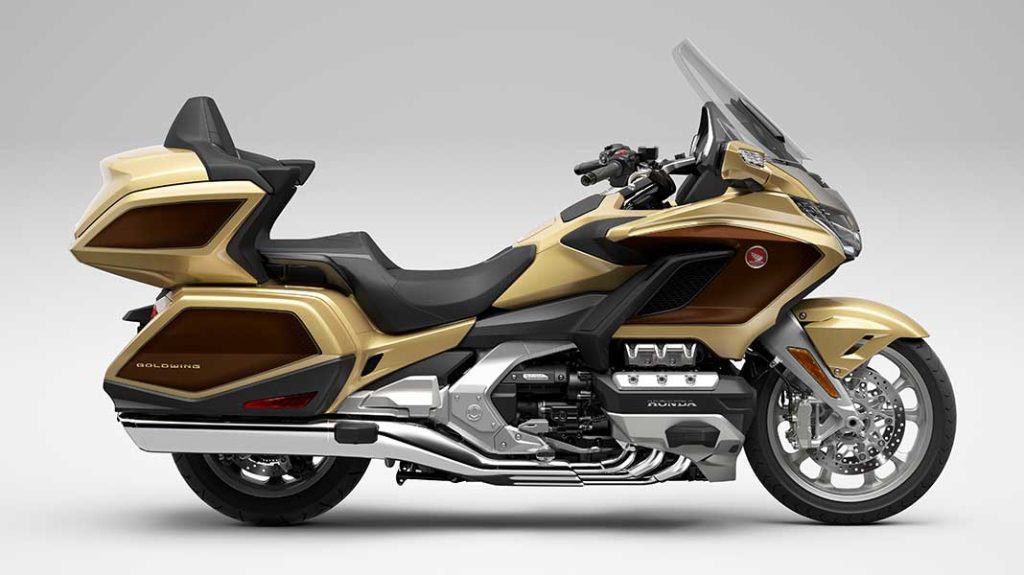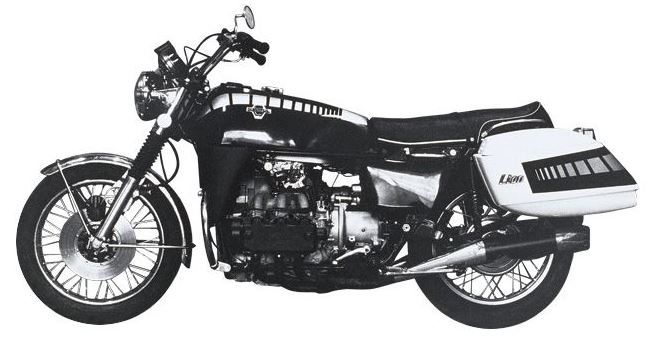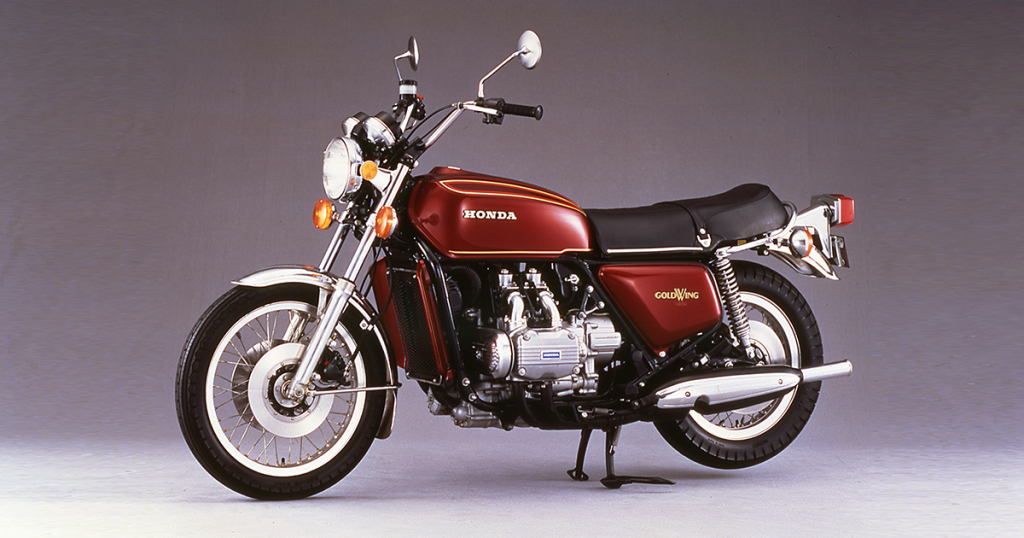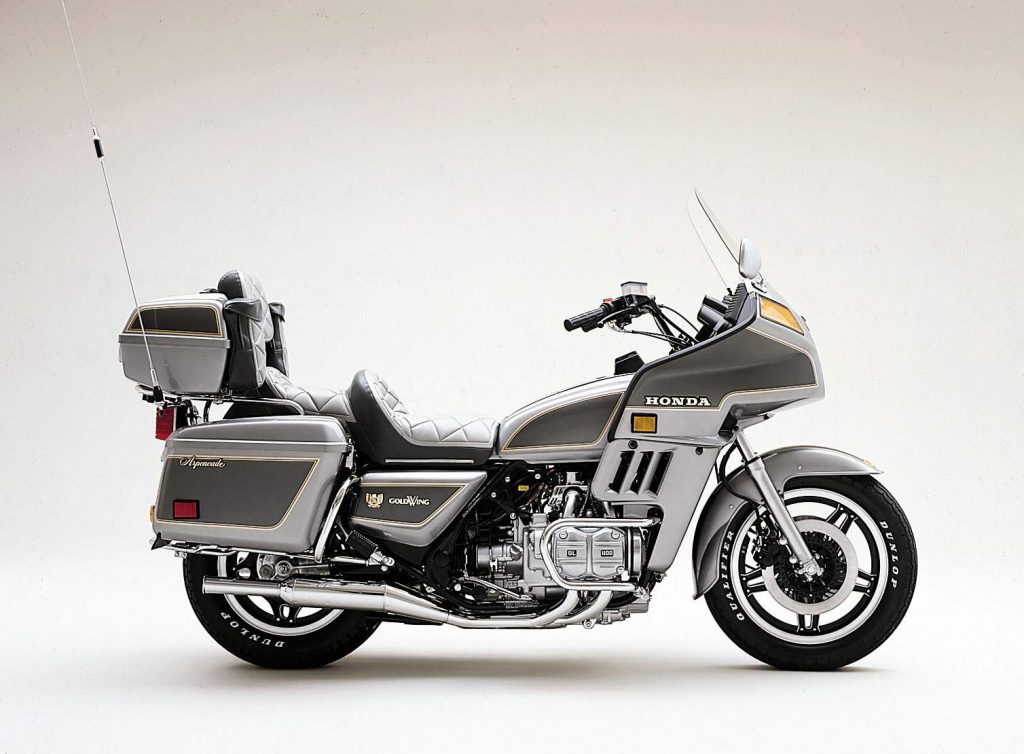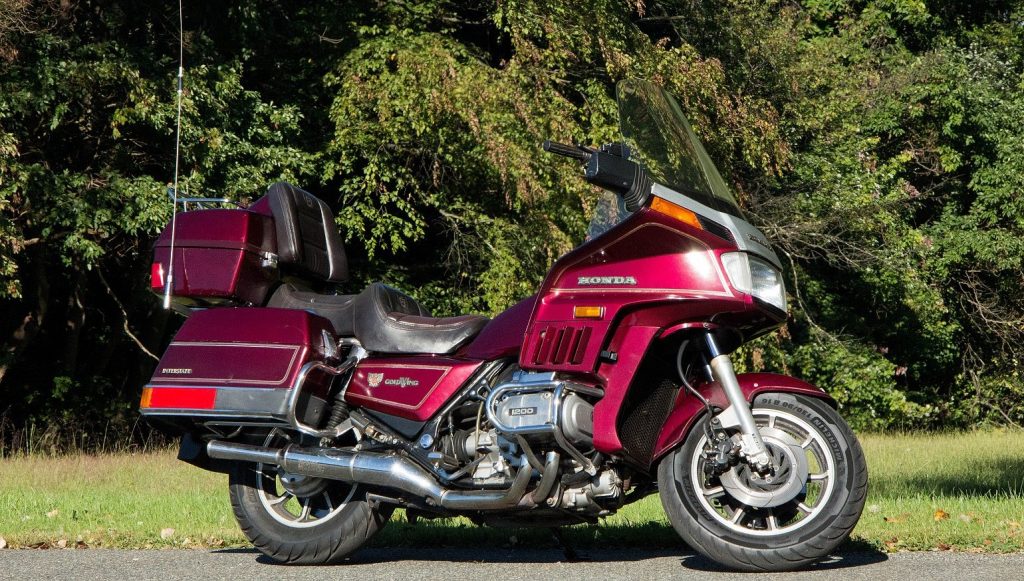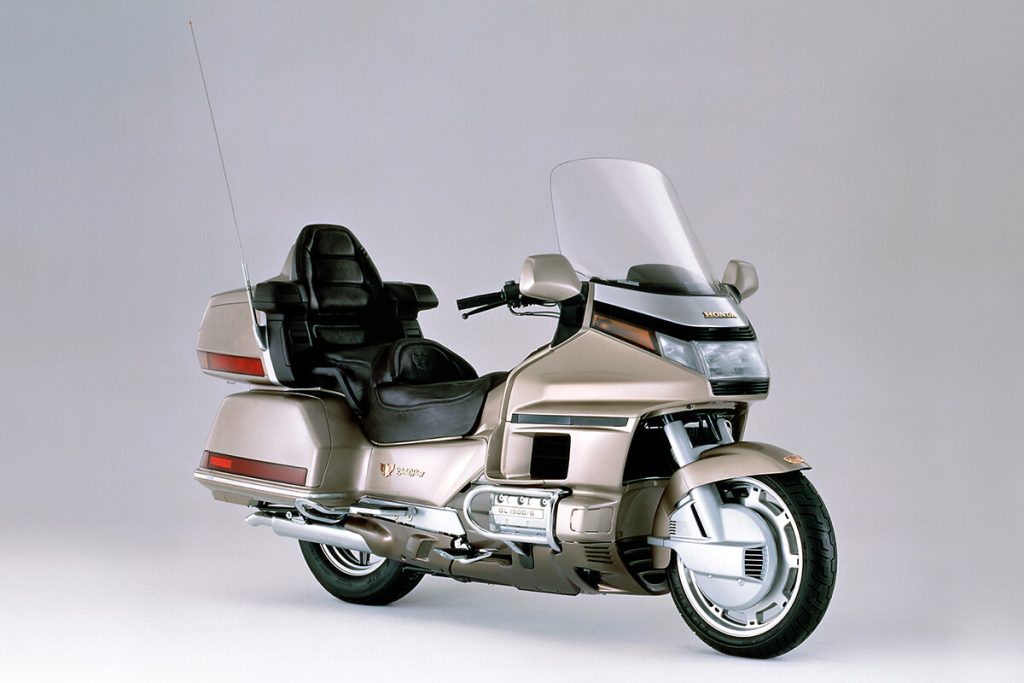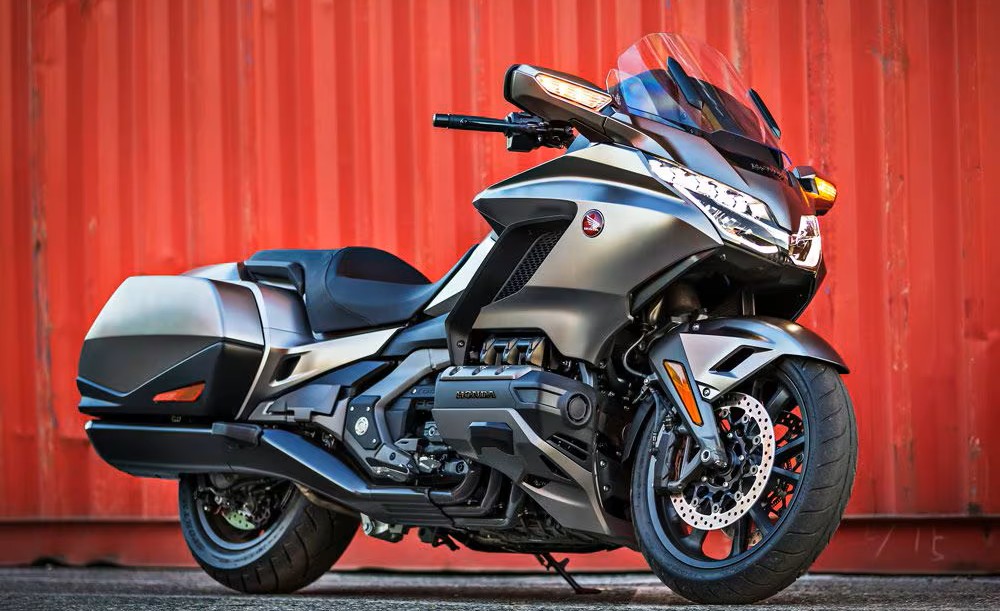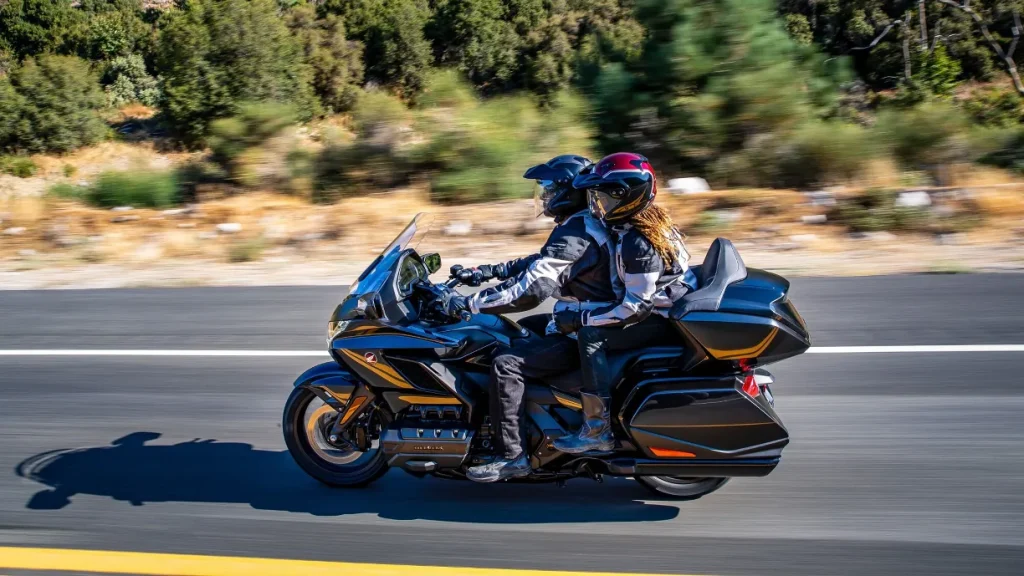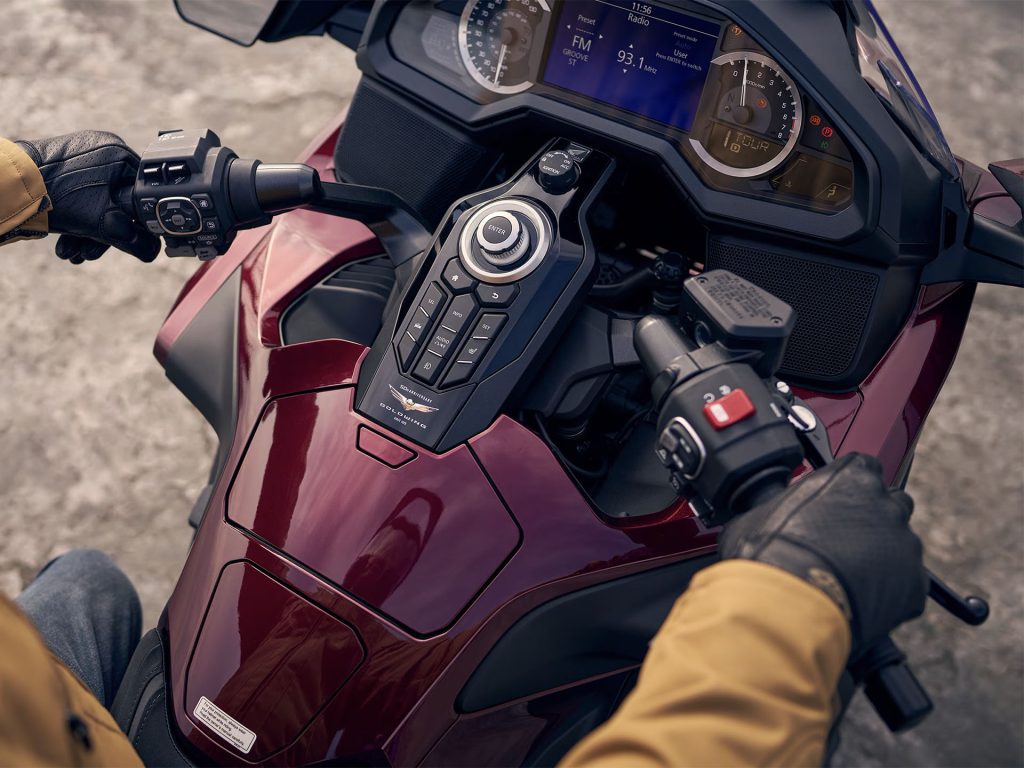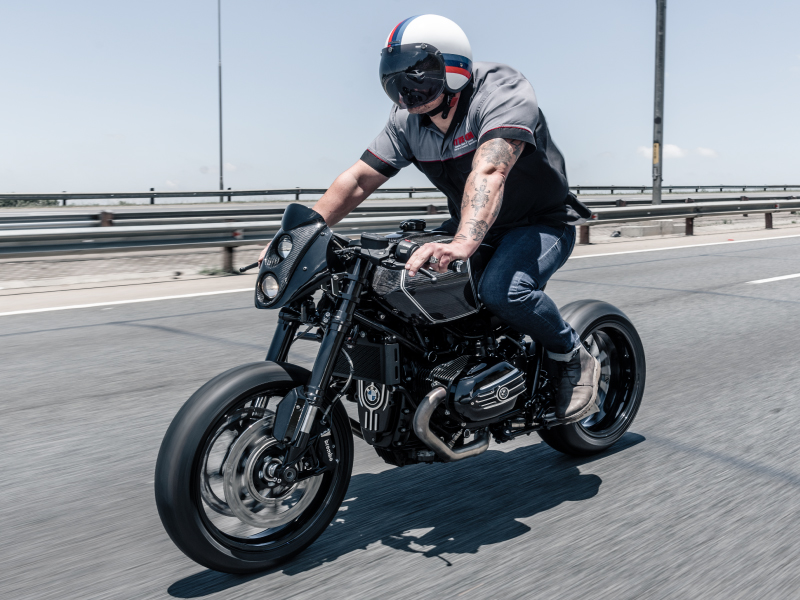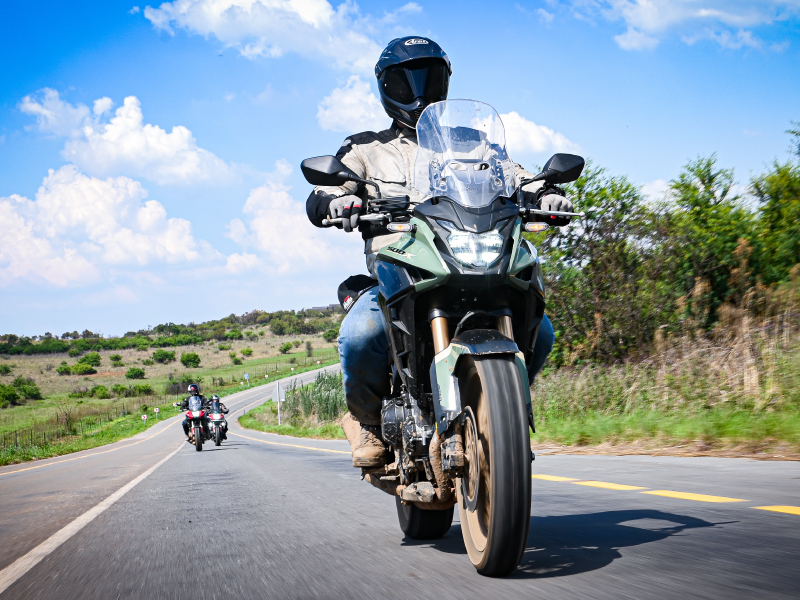“Hey Chaps! Why not head down to Honda Wing East Rand and check out the 50th Anniversary Edition Goldwing.”
So we did just that and guess what? The bike was already sold. In fact the entire first shipment is sold out, with the next batch only arriving in September.
By Glenn Foley
We’ve got a 1981 Gold Wing right here in our offices.
That 1100cc Flat four is fun to ride, if you remember that it’s old and aren’t too fussy about mod cons, fancy braking and suspension systems or electronics. It’s still a pretty luxurious machine. It’s one of those iconic bikes that really set Honda apart from the other Japanese manufacturers at the time.
The GL1000 Gold Wing first made its appearance in 1975.
We’ll guess that that’s before many of you reading this were ever born.
The first Gold Wing is powered by a 999cc Flat-Four pushing 80 horsepower and 82 NM of torque. In the 90’s when I worked for Dave Petersen Motorcycles, we had one on the floor and I was occasionally allowed to ride it home to Benoni and back – and I must admit that I did fall a little bit in love with it.
Dave’s brother Gary saw me on it one day and asked why I rode it so slowly. My reply “Well it’s a Gold Wing, it’s not built to go fast.”
“Oh really!” Was his reply.
He grabbed the bike and proceeded to wheelie the thing up and down Anderson Street.
That original Gold Wing is a far cry from what the GL1800 Honda Gold Wing has evolved into today.
For starters, the current Gold Wing is now powered by a 1,833cc, liquid-cooled, six-cylinder engine that makes 124bhp and 170Nm. Compare those numbers to the first one…
2025 marks the Honda Gold Wing anniversary.
A Little Bit Of Gold Wing History.
When the Honda engineer Sciochiro Irimajiri headed a team of engineers and designers in December 1972, their mission was to design a machine that would re-establish Honda’s lead in outright performance and sheer prestige. Irimajiri told his colleagues that the new Honda would be recognised and acclaimed as the “King of Motorcycles, the world’s fasted and best grand tourer”.
The team came up with the Honda MI, a water-cooled 1470 cc horizontally opposed six cylinder engine, overhead camshaft machine with shaft drive, developing 80 bhp at 6700 rpm and weighing a mere 220 kg. Tests resulted in a 12-second standing start quarter-mile and a top speed of 220 km/h. This was all very well, but it was impossible to obtain a decent riding position with the long engine in a machine with a wheelbase of 148 cm. It was back to the drawing board.
The 1975 Gold Wing was embraced as a touring machine by customers and sold really well against competitors like Harley Davidson.
back then it was was the first four-stroke motorcycle with water-cooling. The flat-four engine was shaft-driven. It had many cool features, including an emergency kick-starter lever stored inside the dummy fuel tank.
For the 1980 model year Honda built an all new follow-up model, the GL1100 Gold Wing.
In addition to its larger engine, the motorcycle was lighter than the first model, had a longer wheelbase more room for the rider and passenger, and increased fuel capacity.
The Gold Wing Interstate became the first mass-produced Japanese motorcycle to appear in full touring kit.
In 1982, Honda added an Aspencade version (named after a popular New Mexico motorcycle rally). The new bike introduced the concept of luxury touring, with a larger seat, additional storage, a CB radio (previously only available as an accessory), and a special paint scheme.
The 1984 Honda Gold Wing was again larger, its engine growing by 97cc and offering more power and torque. The GL1200’s swingarm and wheelbase were longer as well, and improved handling and comfort were made possible via a stiffer frame, repositioned engine and smaller wheels.
For 1988, the Honda Gold Wing underwent what at the time was the most comprehensive model development in Gold Wing history.
The new engine grew two cylinders that was slotted into a new chassis.
Also of note were the increased fuel capacity, improved brakes, and seamless fairing. Production was in the USA, from Honda’s Ohio plant.
The 2001 GL1800 brought fuel injection, an aluminum twin-spar frame, and optional ABS braking. Developed under Masanori Aoki, the next-generation GL featured an engine 312cc larger than that of its predecessor, but it also had an added fun factor, attaining sport-like acceleration and handling.
In 2006, Honda introduced a Gold Wing model with navigation and the world’s first motorcycle airbag, and in 2009, XM Satellite radio was added.
The evolution continued in 2018, with the introduction of an all-new Honda Gold Wing. The bike was lighter, more compact, and more technologically advanced, a fun-to-ride Gold Wing that could just as willingly tackle city streets as it could take riders beyond the next horizon.
For the 2025 model year, Honda marks an important milestone in the Gold Wing platform’s history, as this legendary touring machine celebrates its 50th anniversary.
NEW FOR 2025
- New colours for all trim levels.
- Apple CarPlay and Android Auto can now be used wirelessly on all Gold Wing versions.
- “Since 1975” has been added to the Gold Wing logo that appears on the TFT display when you switch on.
- A special 50th Anniversary badge is situated in front of the seat and on the Smart Key, commemorating the Gold Wing’s important milestone (on all versions except for Light Silver Metallic).
- For model-year 2025, the anniversar edition comes with two free commemorative gifts: a coffee-table book and a tabletop 3D 1:12 scale model. The model features a 1975 Gold Wing on one side and a 2025 Gold Wing on the other side.
The long-distance-riding-focused Gold Wing Tour arrives with automatic dual-clutch transmission. But you’ll have to wait a bit. The first shipment is sold out, with the next batch expected in September.
Every 50th Anniversary Edition Gold Wing comes with a hardbound collector’s book and scale model.



